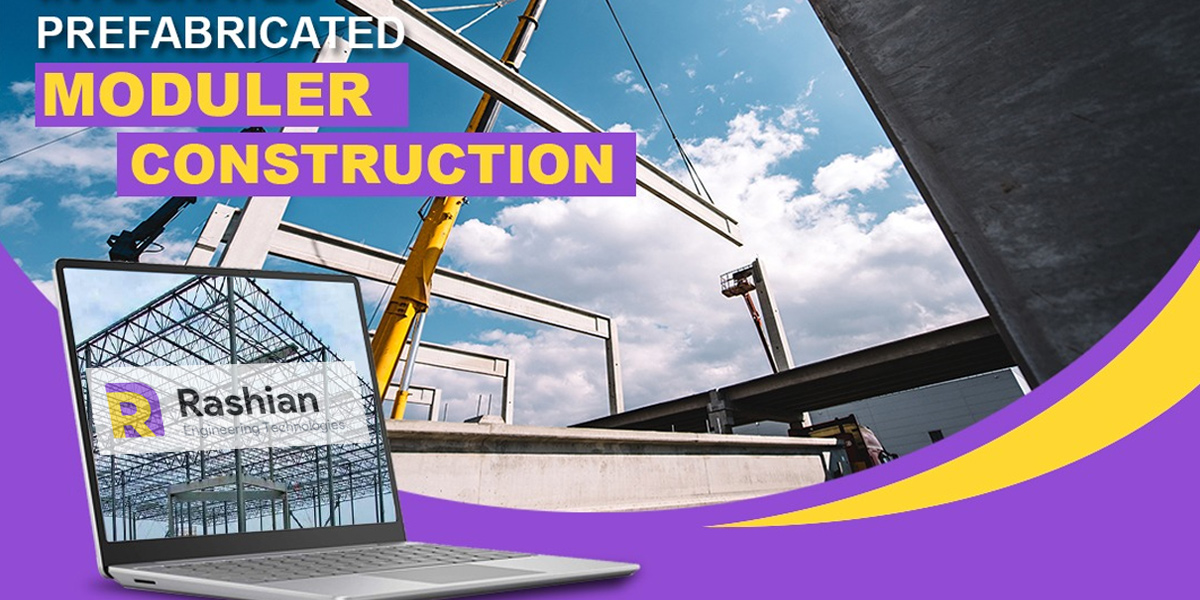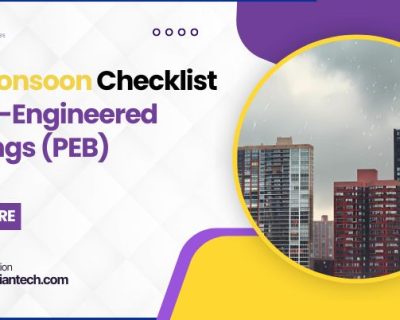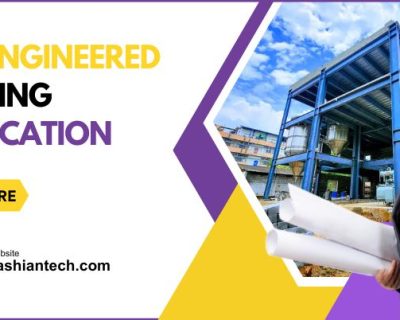Blog

How effective can be the usage of prefabrication process in the construction sites?
Many countries across the globe have embraced the Prefabrication process, which combines good architecture with modern high-performance components and quality-controlled manufacturing procedures. It is the method of constructing buildings; in which certain parts have already been made, assembled, and are ready to be installed on-site. This technique is now being used by a lot of construction sites in India as well. Only a few building contractors employ this technique on the worksite, even though it is an innovative method that can produce well-driven outcomes. This is because many people are unfamiliar with this approach and its techniques. Let’s take a closer look at it in the following passage.
Introduction
Prefabrication is a construction technique where components of a structure are manufactured in a controlled environment before being transported to the construction site for assembly. This method contrasts with traditional on-site construction, where all building activities occur at the location. Prefabrication is used in various industries, including residential, commercial, and industrial construction, due to its numerous advantages such as cost-effectiveness, time efficiency, and reduced environmental impact.
What is prefabrication and how it is used?
Prefabrication is a building method that entails assembling structural parts in a manufacturing or assembly facility and bringing full or incomplete assemblies to the location where the structure will be installed. This is in contrast to traditional building methods, in which each part is constructed onsite, where only the raw materials are shipped. Prefabrication includes everything from the production of walls, staircases, rooftops, and trusses to the production of entire housing units. This is the key reason that this technique of pre-fabrication is gaining popularity since most of the items are prefabricated in the warehouse, reducing the amount of work required on the job site. What are the benefits that any construction site can avail through the method of Prefabrications! Let’s put a highlight of some of the factors in the below passage.
When compared to traditional construction methods, prefabricated construction with the pre-fabrication technique is said to take half the time. Since most of the components are assembled in the plant at the same time, time on site is reduced, and other external influences such as weather or a labor shortage, etc. hardly affect the construction process.
History of Prefabrication
Prefabrication has been around for centuries, with its roots tracing back to ancient civilizations. The Romans used prefabricated materials for their aqueducts and buildings, while in the 19th century, prefabricated structures were used to provide housing for settlers and military operations. The industrial revolution brought advancements in machinery and materials, leading to widespread adoption. Notable examples include prefabricated housing for gold rush miners and military barracks during World War II. In the modern era, prefabrication has evolved with technological advancements, making it a preferred method in sustainable construction.
Types of Prefabrication
Prefabrication can be classified into several types based on the level of pre-assembly and the components used. The main types include:
- Panelized Construction: This involves manufacturing wall, floor, and roof panels separately and assembling them on-site.
- Modular Construction: Entire rooms or sections of a building are prefabricated and then transported to the site for installation.
- Volumetric Prefabrication: Similar to modular construction but involves fully enclosed units like bathrooms or kitchens that are placed within a structure.
- Structural Prefabrication: This includes the prefabrication of load-bearing components such as beams, columns, and trusses.
- Component Prefabrication: Small-scale prefabrication involving individual elements like doors, windows, and staircases.
Materials Used in Prefabrication
The materials used in prefabricated construction vary depending on the project requirements. Common materials include:
- Concrete: Used for precast panels and structural components.
- Steel: Provides strength and flexibility, commonly used in large-scale industrial buildings.
- Wood: Frequently used in residential and modular constructions due to its sustainability.
- Glass and Composites: Used for aesthetic and functional elements.
Process of Prefabrication
The prefabrication process involves several stages:
- Design and Planning: Engineers and architects create detailed plans using Building Information Modeling (BIM) for precision.
- Manufacturing: Components are produced in factories with controlled conditions.
- Transportation: Prefabricated elements are carefully transported to the site.
- Assembly: Components are assembled using cranes and specialized equipment.
- Finishing: Final touches such as painting, electrical work, and plumbing are completed on-site.
Advantages of Prefabrication
Prefabrication offers numerous benefits, including:
- Time Efficiency: Reduces construction time as manufacturing and site preparation occur simultaneously.
- Cost-Effectiveness: Lower labor costs and reduced material wastage contribute to budget savings.
- Quality Control: Factory settings ensure higher precision and consistency compared to on-site construction.
- Sustainability: Minimizes construction waste and enhances energy efficiency.
- Safety: Reduces on-site hazards due to controlled production conditions.
Challenges and Limitations
Despite its advantages, prefabrication faces some challenges:
- Transportation Issues: Large components require careful handling and logistics planning.
- Initial Costs: Setting up a prefabrication facility can be expensive.
- Design Limitations: Some architectural designs may not be feasible with prefabrication.
- Perception and Adoption: Some stakeholders still prefer traditional construction methods due to familiarity.
Applications of Prefabrication
Prefabrication is widely used in various sectors:
- Residential Buildings: Prefabricated homes offer affordability and quick construction.
- Commercial and Office Spaces: Prefabrication allows for flexible and scalable office solutions.
- Healthcare Facilities: Quick deployment of hospitals and clinics in emergency situations.
- Infrastructure Projects: Bridges, tunnels, and road components are prefabricated to expedite development.
Future of Prefabrication
The future of prefabrication is promising with advancements in technology. Emerging trends include:
- 3D Printing: Allows for rapid production of prefabricated components with complex designs.
- Smart Prefabrication: Integration of IoT and AI for better quality control and automation.
- Sustainable Innovations: Use of eco-friendly materials and renewable energy sources in prefabricated buildings.
This is the most eco-friendly method of construction and it generates far less pollution than traditional techniques because most of the materials are pre-fabricated. Also, waste materials produced during the manufacturing of building parts can be easily recycled in the plant, ensuring that nothing goes to waste and that the process is environmentally sustainable.
Cost-effective
Another significant advantage of using prefabrication techniques in building projects is that the total expense is significantly reduced. The pre-manufactured products are available in a variety of budgets and shapes; it is up to us to choose the right match for the construction. It also eliminates the need for a lot of inefficient middlemen and henceforth helps in saving the costs on total output. Finally, since it is both cost-effective and time-efficient, prefabricated construction is expected to be a successful construction model in India. Buildings can also be designed according to Indian household specifications that can survive the weather and natural disasters with the aid of technology. As a result, using pre-fabrication techniques on the building site would be a smart choice.
Conclusion
Prefabrication is revolutionizing the construction industry with its efficiency, cost savings, and sustainability. While challenges exist, ongoing innovations are making prefabrication a viable and attractive option for modern construction needs. As technology advances, prefabrication will continue to shape the future of architecture and urban development.
Frequently Asked Questions (FAQs)
1. What is prefabrication in construction?
Prefabrication is a method where building components are manufactured in a controlled environment and then transported to the construction site for assembly.
2. How does prefabrication differ from traditional construction?
Unlike traditional construction, which builds structures entirely on-site, prefabrication involves creating parts off-site, reducing labor time and costs.
3. What are the main benefits of prefabrication?
Key benefits include time efficiency, cost savings, improved quality control, sustainability, and enhanced safety.
4. What materials are commonly used in prefabrication?
Common materials include concrete, steel, wood, glass, and composite materials.
5. What are some examples of prefabricated structures?
Examples include modular homes, office spaces, bridges, and healthcare facilities.
6. Are prefabricated buildings durable?
Yes, prefabricated buildings are designed to meet structural and safety standards, making them as durable as traditionally constructed buildings.




